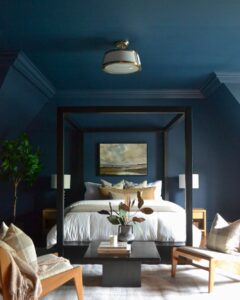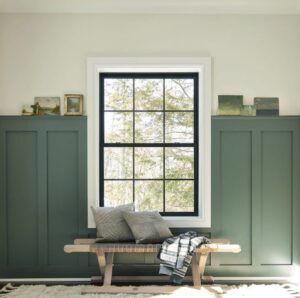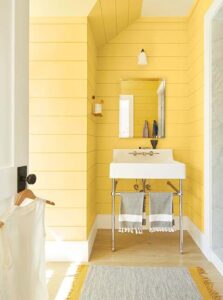
It’s no secret in design that color stands out for its profound impact on our daily lives. The hues chosen for our living and working environments do more than just decorate a space; they can significantly affect our mood, behavior, and productivity.
Understanding the psychology of color is essential for creating environments that inspire, energize, and comfort us. At Paint Doctor, we take color seriously. That’s why we want to help you choose the right colors for what you are trying. Why? Because color influences our daily experiences. It’s our job to help you make informed decisions about your next decor project to ensure it’s right on track with your goal.
The Influence of Color on Mood and Behavior
Color psychology suggests that different shades can evoke particular emotions and behaviors. For instance, blue, often associated with the sky and ocean, promotes calmness and serenity, making it an excellent choice for bedrooms and home offices. It’s also highly favored in corporate settings for its ability to facilitate concentration and productivity. Blue hues also have a profound impact on our productivity levels too. Did you know that they help improve focus and efficiency?

Green, the color of nature, is another hue that fosters relaxation and renewal. Incorporating various shades of green can create a balanced and rejuvenating atmosphere in both residential and commercial spaces. Known to boost creative thinking, green is the color for environments where innovation is key. It’s also particularly beneficial in environments where long hours and high stress are common, as it helps reduce anxiety and promote well-being.
On the other end of the spectrum, warm, high-energy colors like red and orange are known for their stimulating effects. Red, with its vibrancy, can raise energy levels, making it a powerful choice for dining areas or any space where conversation and activity are encouraged. However, its intensity might not be suitable for areas requiring focus and calm as these colors often increase alertness and physical activity, making them suitable for dynamic work environments and spaces designed for movement and collaboration rather than places of rest and relaxation.
 Yellow, the epitome of cheerfulness, can invigorate and uplift. Its brightness sparks creativity, making it an ideal accent for creative studios, kitchens, and playrooms. Yet, its use should be balanced, as overly bright shades can lead to feelings of frustration or anger in both homes and workplaces.
Yellow, the epitome of cheerfulness, can invigorate and uplift. Its brightness sparks creativity, making it an ideal accent for creative studios, kitchens, and playrooms. Yet, its use should be balanced, as overly bright shades can lead to feelings of frustration or anger in both homes and workplaces.
Balancing Aesthetics and Functionality
When integrating color psychology into decor, the goal is to balance aesthetic appeal and functional needs. Consider the purpose of each space and the activities it will host. For instance, a home office might benefit from calming blues and greens to enhance productivity, while a living room might invite warmer tones for relaxation and social interaction.
In commercial spaces, branding can also influence color choice, incorporating corporate colors to strengthen brand identity. However, the psychological impact on employees and customers should remain a guiding principle, ensuring spaces reflect the brand and promote well-being and efficiency.
Need help figuring out where to start? Call the Paint Doctor, and let’s talk it out. Together, we can blend your space goals with color theory to ensure your space positively influences mood, behavior, and productivity.
Image Source: Benjamin Moore

